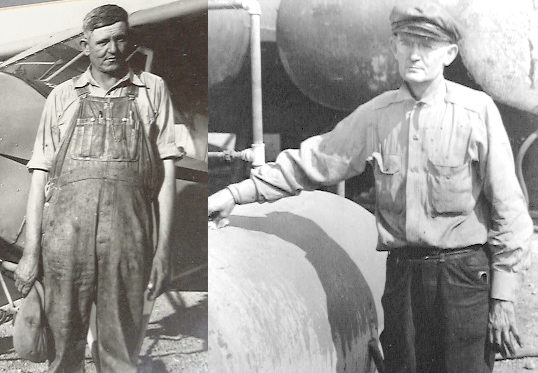INDUCTEE(s): Jimmy and Aubry Finklea
YEAR INDUCTED: 1985
Jimmy and Aubry Finklea founded and operated Finklea Brothers Dusting Service in Leland, Mississippi in the late 1920s. They built their own dispensing equipment and installed it in pre-war aircraft. They became the largest dusting firm in existence at that time, operating as many as 50 aircraft. In 1926 Jimmy Finklea supplied the aircraft, a Standard SJ with a Hisso engine, for J.O. Dockery to use applying the first ever calcium arsenate dust on worms in cotton in Leland, Mississippi. At the time, Finklea was learning to fly. By 1931, Finklea Brothers was running full blast, operating as many as 50 aircraft. The Finklea brothers; Jimmy, Aubry, Ray and Buck, operated a large machine shop and garage in Leland.
Although Jimmy never became an accomplished duster pilot, he and brother Aubry realized the potential of ag aviation and in 1929 began buying up all the available aircraft and converting them to dusters. Even in those days, the Finklea equipment was ahead of its time, using sheet aluminum for their spreaders. Their hoppers had smooth operating agitators driven by conventional gear boxes and fans. They also constructed hoppers from sheet aluminum. The operation operated numerous aircraft, but seemed to specialize in the Wacos.
Aubry Finklea was a small man, about 5’ 6” tall. He was a master mechanic and during working hours wore a huge pair of baggy overalls. Into the pockets of the overalls he crammed the tools of his trade. A couple of pilots once weighed Aubrey’s overalls to discover they weighed 35 pounds!
The Finklea operation had plenty of capital, all earned from the machine shop and flying businesses. Aubrey believed in paying cash and was known for carrying large amounts of it in his overalls or blue serge suit. On one occasion, according to J.O. Dockery, he pulled $40,000 from his pockets to pay for eight Wacos and Travel-Airs!
Even the Finklea Brothers had their regulatory problems. As business increased, the firm apparently began using pilots who were not entirely legal. The CAA began hounding the company and the operation remained in hot water. Finally, in desperation, Jimmy and Aubry made their position clear by erecting a large fence around the airfield with a locked gate. On the gate was hung a sign that read: “Transport Pilots, CAA People, and Dogs Not Allowed!”
By 1930 the Finklea operation was the largest in the country. They ground and bagged their own calcium arsenate. A boll weevil infestation flourished with some growers complaining the applications were ineffective. The reality was the material was inferior as in insecticide, but serious business was lost all the same. Accident rates began to climb and after one fatality on a federal airway, the feds began to crack down on the company in an obvious attempt to close it. Finally, the firm came to an end. But, Finklea Brothers Dusting Service should be remembered for advancing the ag aviation industry immeasurably, introducing hundreds of growers to agricultural flying and providing employment to many, many pilots. The company remarkably improved dispensing equipment and today most dry hopper installations are basically of the same design produced by the Finklea brothers. Even more important, the firm produced a pilot nucleus that spread the formation of new ag aviation firms all over the country. Credit: Mabry Anderson’s Low and Slow.







